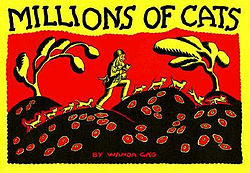APA Reference of Book:Sparks, B. (1971). Go ask Alice. Englewood Cliffs, N.J.: Prentice-Hall.
Impressions: Although I hate to admit it, I truly disliked this book. While I'm sure that teenagers still go through similar situations, I felt that the book was too heavy handed. At the time of publication, this book was touted as a real diary of a teenager being published anonymously. Since then, it has been speculated that it was actually written as a cautionary tale by Beatrice Sparks who published several other similar "diaries". The reason I dislike this book so much was because the girl in the story just seemed incredibly stupid. She always seems to have the desire to turn her life around but does almost nothing to accomplish that. Although I'm sure this book was shocking when it first came out, nowadays it seems dated and unrealistic. I can't believe that a teenager with so many issues managed to keep up with a perfectly composed diary for such a long period of time and was able to easily remember and describe all of her experiences. Personally, I think there are better books on there on this topic that would be more relevant to current teens.
Professional Review: (Ages 12 and up) ... ''Go Ask Alice,'' was published in 1971 as a ''real diary'' about a good girl who is turned on to drugs by friends, runs away, trades sex for fixes and dies. It is said to have sold more than four million copies. Linda Glovach, since exposed as one of the ''preparers'' -- let's call them forgers -- of ''Go Ask Alice,'' has just written ''Beauty Queen,'' about a girl who flees her alcoholic mother, becomes a stripper and dies of heroin addiction. And Melvin Burgess's ''Smack,'' published in England as ''Junk,'' portrays a boy who flees his alcoholic parents, sees his girlfriend turn to prostitution and becomes a heroin addict.
''Go Ask Alice'' is the most palatable, because, while it is poorly written and incredible, at least it is not derivative. The book's writers, who also include the author and physician Beatrice Sparks, have a tin ear for adolescent dialogue and a bad habit of driving home political points by poking fun at their characters. On July 9, the normal child Alice goes on her first acid trip. By Sept. 6, she is complaining, ''I'm getting so that no matter what I do I can't please the Establishment.'' By December, matters are grimmer: ''I can't believe that soon it will have to be mother against daughter and father against son to make the new world.'' Steal this book, she almost begs.
Read more than a quarter-century later, the Vietnam-era themes seem quaint, and they are laughably written. The ''Alice'' writers, or editors, were delivering a cautionary tale: Fall in with the wrong crowd and you will do drugs, turn against America and dishonor your parents. Assuming the voice of a 15-year-old was a rhetorical necessity, for teen-agers are not overwhelmed with respect for their elders' advice.
But such a narrative leap requires talent, strong talent. Some adults can write first-person adolescents well (of current writers, Tom Perrotta and Ron Carlson come to mind), but most will overreach with their lingo, write with too much sophistication or too little, or fall into anachronism. Yet the ''Alice'' writers faced a real problem, one that Glovach and Burgess should be respected for tackling. How can one write for young people about horrible things? For lesser writers, that is where the formula enters. The young people must not choose drugs -- drugs must befall them. ... I do not think children should read about heroin addiction. But if they must, it is a moral concern that the book be well written. A good war movie makes you despise war, a terrible one makes you grin, but a mediocre one might send you to the recruiting office. Producing literature that keeps children from shooting up is possible only if the writing is fresh and skillful, never trite. These three failed attempts may not send children down the road to addiction, but they won't have them wearing the path back to the library, either.
Oppenheimer, M. (1998, November 15). Just say ‘uh-oh’. [Review of the book Go ask Alice,
by Anonymous]. The New York Times 7(2), 36. Retrieved from http://www.nytimes.com.
Library Uses: Although this book could be used for a teen discussion about drug abuse, I think that there is a possibility of teens rolling their eyes at this book. Perhaps the best discussion might be how the culture of drugs has changed since this books publication and the effect that has on teens. For example, your average highs school student most likely has never been slipped acid like in the book, but they are probably all familiar with someone who smokes marijuana.



















